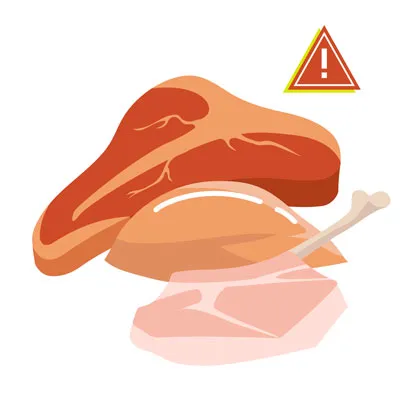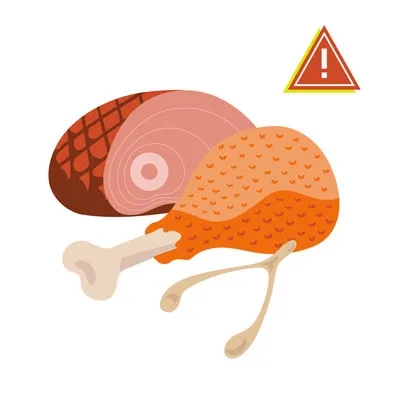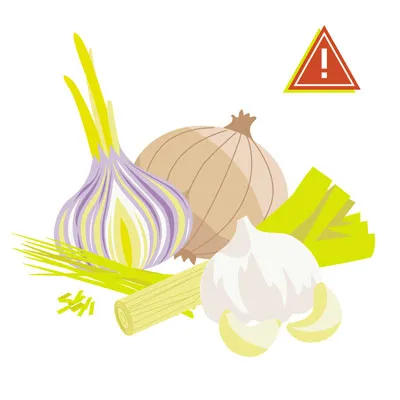As loving dog owners, we constantly strive to provide our furry companions with the best care, including a nutritious diet. However, the world of human food can be a minefield for our pups, with many common ingredients posing serious health risks. When it comes to the question, “What Is The One Meat All Dogs Should Avoid?” the answer unequivocally points to raw and undercooked meat, alongside its inherent dangers like bones and potential bacterial contamination. While other meat preparations can also be harmful due to fat content or seasonings, raw meat presents a multifaceted threat that warrants the utmost caution. Understanding why certain meats are dangerous for dogs is crucial to protecting them from preventable illnesses and ensuring a long, healthy life.
Each year, hundreds of thousands of pet poisonings occur in the United States, and while not all are food-related, common household foods are a significant contributor. Our dogs’ digestive and metabolic systems differ vastly from our own, meaning substances we safely consume can be highly toxic to them. This guide will delve into the specific reasons why raw and undercooked meat is the primary concern, explore other risky meat types, and equip you with the knowledge to make safe dietary choices for your beloved canine.
Understanding Canine Digestion: Why Some Meats Are Harmful
The canine digestive system, while robust, is not designed to handle all human foods, particularly certain meat preparations. Dogs metabolize substances differently than humans, which explains why some foods that are harmless to us can be extremely toxic to them. This metabolic difference is critical when considering meat. For instance, while we can safely consume raw or undercooked meats with minimal risk (assuming proper handling), a dog’s system can be overwhelmed by the bacteria often present in these foods.
Furthermore, a dog’s ability to digest bones varies greatly depending on whether they are raw or cooked. Raw bones can still pose a choking hazard or cause internal damage, but cooked bones are particularly insidious due to their tendency to splinter, creating sharp fragments that can puncture organs. This fundamental difference in processing highlights why a blanket approach to feeding human foods, especially meat, can be detrimental to your dog’s health. For a broader understanding of foods your dog should steer clear of, consult a list of what dogs cant eat.
The Number One Meat to Avoid: Raw and Undercooked Meats
If there is one category of meat all dogs should avoid, it is undeniably raw and undercooked meat. This type of meat presents a dual threat to your canine companion: dangerous bacterial contamination and physical hazards from bones. Never feed your dog raw or undercooked meat.
Bacterial Contamination: A Hidden Danger
Raw and undercooked meats, including chicken, beef, turkey, and pork, often harbor harmful bacteria such as Salmonella and E. coli. While some proponents of raw diets claim dogs have stronger stomachs equipped to handle these pathogens, the reality is that dogs can and do get sick from them. Symptoms can range from mild gastrointestinal upset like vomiting and diarrhea to severe, life-threatening infections. These infections can be particularly dangerous for puppies, elderly dogs, and those with compromised immune systems.
Beyond the immediate risk to your dog, there’s also a significant public health concern. Dogs fed raw meat can shed these bacteria in their feces, contaminating your home environment and posing a risk to human family members, especially young children, the elderly, and immunocompromised individuals. The Centers for Disease Control and Prevention (CDC) strongly advises against feeding raw pet food due to these risks to both pets and people.
The Peril of Raw Bones: Choking and Internal Damage
Raw meat often comes with bones, and while raw bones are sometimes considered “safer” than cooked bones because they are less likely to splinter, they still pose substantial risks. Dogs can choke on raw bones, especially smaller fragments. Larger bones can get lodged in the esophagus or intestines, leading to life-threatening obstructions that require emergency surgery. In some cases, sharp edges of raw bones can cause internal scrapes, lacerations, or even perforations of the digestive tract, resulting in severe pain, infection, and potentially fatal abdominal complications. This makes the inclusion of bones in raw meat a primary reason to avoid this type of food entirely.
 Raw Meat
Raw Meat
Beyond Raw: The Perils of Fatty Cuts and Cooked Bones
While raw meat takes the top spot for avoidance, other forms of meat can also be highly dangerous to dogs, primarily due to their fat content and the structure of cooked bones. These seemingly innocent scraps can lead to serious health issues.
Fatty Meats: The Risk of Pancreatitis
High-fat meats are a significant concern for canine health. This includes items like chicken skin, turkey skin, ham, bacon, and other fatty cuts of meat. While a small amount of fat is essential for a dog’s diet, excessive fat intake, especially from rich human foods, can trigger acute pancreatitis.
Pancreatitis is an inflammation of the pancreas, a vital organ that produces digestive enzymes and hormones like insulin. When inflamed, the pancreas can essentially begin to digest itself, causing immense pain, severe vomiting, diarrhea, lethargy, and loss of appetite. Acute pancreatitis is a life-threatening illness with severe complications that often requires intensive veterinary care, including hospitalization. It’s far better to dispose of these fatty scraps than to offer them as a treat to your pet.
 Chicken & Turkey Skin, Ham, & Other Fatty Cuts of Meat
Chicken & Turkey Skin, Ham, & Other Fatty Cuts of Meat
Cooked Bones: A Splintering Hazard
Many owners mistakenly believe that giving their dog cooked bones is a harmless treat. However, cooked bones are arguably even more dangerous than raw ones. The cooking process makes bones brittle and prone to splintering into sharp, jagged fragments. These fragments can cause a myriad of problems for your dog, including:
- Choking hazards: Bones, especially smaller ones from poultry, can easily get lodged in a dog’s throat.
- Oral injuries: Splintered bones can cut the mouth, tongue, or gums.
- Internal obstructions: Bone fragments can block the esophagus, stomach, or intestines, leading to severe pain and requiring emergency surgery.
- Internal punctures: The sharp edges of splintered bones can puncture the stomach or intestinal wall, leading to a fatal abdominal infection (peritonitis).
Therefore, whether it’s turkey bones from Thanksgiving or chicken bones from dinner, all cooked bones should be strictly avoided. For insights into what constitutes a healthy and safe meat choice for your dog, refer to what is the best meat for dogs to eat.
Other Meat-Related Considerations: Seasonings and Processed Meats
Even if the meat itself is safe, the way it’s prepared for human consumption can render it toxic for dogs. Many common seasonings and processed meat products contain ingredients that are highly detrimental to canine health.
Dangerous Seasonings and Spices
Meats prepared for human meals are often seasoned with ingredients that are toxic to dogs:
- Onions, Garlic, Chives, and Leeks: These members of the allium family contain sulfoxides and disulfides, which can damage red blood cells and lead to potentially fatal anemia in dogs. Onion and garlic powders are prevalent in many prepared foods, so vigilance is key.
- Salt: Excessive salt intake can disrupt a dog’s fluid balance, leading to sodium ion poisoning. Symptoms include tremors, seizures, diarrhea, and even coma. Heavily salted meats or gravies should be avoided.
- Spicy Food: Hot, spicy seasonings found in many meat dishes can cause severe gastrointestinal upset, including vomiting, stomach ulcers, and painful diarrhea for your dog.
- Nutmeg: This spice, sometimes used in meat glazes or marinades, contains myristicin, which can cause hallucinations and severe vomiting in dogs.
Therefore, plain, unseasoned meat is always the safest option if you choose to offer small amounts of dog-safe meat.
 Onions, Garlic, Chives, & Leeks
Onions, Garlic, Chives, & Leeks
Processed Meats: A Cocktail of Risks
Processed meats such as hot dogs, bacon, sausages, and deli meats are generally unhealthy for dogs. They are typically high in fat, which, as discussed, can lead to pancreatitis. Furthermore, they contain excessive amounts of sodium, preservatives, and artificial flavorings that are not suitable for canine consumption. Some processed meats might even contain hidden toxic ingredients like onion powder or xylitol (in some sugar-free marinades or sauces, though less common for meat). It’s best to avoid these altogether and stick to whole, unprocessed foods when treating your dog. To discover a comprehensive array of foods that are safe for your dog, explore what foods are ok for dogs to eat.
 Spicy Food
Spicy Food
Safe Meat Options for Your Dog
While raw meat and fatty, seasoned cuts should be avoided, there are indeed safe ways to incorporate meat into your dog’s diet as healthy treats. The key is moderation, plain preparation, and ensuring all bones are removed.
Examples of Safe Meats (in moderation):
- Plain, Cooked Turkey: Boneless, skinless, unseasoned turkey meat is an excellent source of lean protein.
- Plain, Cooked Chicken: Similar to turkey, plain, boneless, skinless chicken is a healthy treat.
- Cooked Fish: Salmon and sardines, cooked plain and boneless, offer beneficial omega-3 fatty acids. Plain, canned tuna (packed in water, not oil, and low sodium) can also be given in moderation to avoid excessive mercury.
- Plain, Cooked Shrimp: Shells, heads, tails, and legs removed, unseasoned shrimp can be a tasty treat.
- Cooked Eggs: Fully cooked eggs (scrambled or boiled) provide protein and can even soothe an upset stomach.
Always ensure any meat you offer your dog is thoroughly cooked, completely boneless, and free from any seasonings, oils, or butter. If in doubt, consult your veterinarian. For a broader perspective on what your dog can safely consume, including various non-meat options, check out what are things that dogs can eat.
 Shrimp and Fish
Shrimp and Fish
Recognizing Symptoms of Food Toxicity
Even with the best precautions, accidents can happen. It’s crucial for every dog owner to be able to recognize the signs of food toxicity, particularly if you suspect your dog has ingested harmful meat or bones. Symptoms can vary depending on what was consumed, the amount, and your dog’s individual sensitivity, but common signs include:
- Gastrointestinal upset: Vomiting, diarrhea (which may be bloody), loss of appetite, abdominal pain, or a bloated, hard-to-the-touch stomach.
- Neurological symptoms: Weakness, lethargy, tremors, uncoordinated movements (wobbliness), disorientation, hyperactivity, or seizures.
- Cardiovascular and respiratory issues: Rapid or labored breathing, irregular heartbeat.
- Other signs: Excessive drooling, changes in thirst or urination, or pale gums.
If you observe any of these symptoms after your dog may have eaten something dangerous, act quickly.
Preventing Accidental Ingestion
Proactive measures are the best defense against your dog consuming harmful meats or other toxic foods.
- Store Foods Out of Reach: Keep all human foods, especially raw meats, bones, and fatty scraps, securely stored in high cabinets, locked pantries, or in bins with tight-fitting lids that your dog cannot access.
- Avoid Feeding from Your Plate: Resist the temptation to share food from your plate or feed scraps directly from the kitchen. This teaches your dog to beg and increases the likelihood they might accidentally ingest something harmful.
- Educate Family and Guests: Ensure everyone in your household, including children and visitors, understands the dangers of feeding human food to your dog. Emphasize that no matter how much your dog begs, they should only receive dog-specific treats.
- Be Vigilant During Holidays and Gatherings: Busy times, especially holidays, often involve more food preparation and distractions. This is when dogs are most likely to sneak forbidden items. Be extra cautious about unattended plates, garbage bins, and food left on counters.
Beyond meat, there are many other human foods, including certain vegetables, that can harm your dog. To ensure comprehensive safety, learn what vegetables should dogs avoid eating.
What to Do If Your Dog Eats Something Dangerous
If your dog consumes a toxic food, especially raw meat, bones, or fatty scraps, prompt action is critical.
- Contact Your Veterinarian Immediately: Do not hesitate. Call your veterinarian or an emergency veterinary clinic (which should be on speed dial) right away. Time is of the essence in treating food toxicities.
- Provide Key Information: Be prepared to tell the vet what your dog ate, approximately how much, and when it was ingested. This information is vital for determining the appropriate course of action.
- Avoid Home Remedies Unless Advised: Do not try to induce vomiting or administer any home remedies without explicit instructions from your veterinarian. Depending on the substance, inducing vomiting could cause more harm.
Staying calm and acting quickly according to professional veterinary advice will give your dog the best chance of a positive outcome.
Keeping Your Dog Healthy and Safe
Navigating the complexities of canine nutrition and food safety can feel overwhelming, but understanding the primary dangers is the first step. When considering “what is the one meat all dogs should avoid,” raw and undercooked meat, with its inherent risks of bacterial contamination and bone hazards, stands out as the most critical to eliminate from your dog’s diet. Additionally, fatty cuts of cooked meat and cooked bones pose significant threats, from pancreatitis to internal injuries.
Fortunately, there are plenty of safe and healthy food options, including plain, cooked, boneless meats, which you can offer as treats. Always prioritize plain preparation and consult your veterinarian if you are unsure about any food item. Vigilance in food storage, educating your household, and knowing what to do in an emergency are your best tools to protect your beloved canine companion from unexpected food-related dangers.
Pet insurance can also be a valuable resource for unexpected incidents involving toxic food ingestion. Policies often help cover the costs of emergency veterinary care, providing peace of mind. Many pet insurance providers also offer 24/7 helplines, allowing you to speak with a veterinary expert anytime you’re concerned about something your pet may have eaten.
References
- “Top 10 dog poisons,” Hilary Parker (5/2023), WebMD, https://www.webmd.com/pets/dogs/top-10-dog-poisons
- “What happens if a dog eats chocolate?” (10/2023), Colorado State University, https://vetmedbiosci.colostate.edu/vth/animal-health/why-is-chocolate-bad-for-dogs/
- “Fruits and vegetables dogs can or can’t eat,” (3/2024), American Kennel Club, https://www.akc.org/expert-advice/nutrition/fruits-vegetables-dogs-can-and-cant-eat/
- “What to do if your dog drinks alcohol,” Jerry Klein (7/2023), American Kennel Club, https://www.akc.org/expert-advice/vets-corner/is-alcohol-dangerous-for-dogs/
- “Can dogs eat apples?” Hector Joy (12/2022), PetMD, https://www.petmd.com/dog/general-health/can-dogs-eat-apples
- “Can dogs eat plums?” Katie Koschalk (7/2023), Chewy, https://be.chewy.com/nutrition-pet-diet-tips-can-dogs-eat-plums/
- “Avocado (Persea spp) Toxicosis in Animals,” Cristine Hayes (9/2024), Merck Veterinary Manual, https://www.merckvetmanual.com/toxicology/food-hazards/avocado-persea-spp-toxicosis-in-animals
- “People foods to avoid feeding your pets,” (n.d.), ASPCA, https://www.aspca.org/pet-care/animal-poison-control/people-foods-avoid-feeding-your-pets
- “People foods dogs can and can’t eat,” (3/2024), American Kennel Club, https://www.akc.org/expert-advice/nutrition/human-foods-dogs-can-and-cant-eat/
- “Can dogs eat nuts?” Amanda Ardente (1/2023), PetMD, https://www.petmd.com/dog/nutrition/can-dogs-eat-nuts
- “Can dogs drink milk?” Sandra C. Mitchell (1/2024), PetMD, https://www.petmd.com/dog/nutrition/can-dogs-drink-milk
- “Can dogs have nutmeg?” Barri J. Morrison (11/2023), PetMD, https://www.petmd.com/nutmeg-safe-dogs
- “Onion, garlic, chive, and leek poisoning in dogs,” Renee Schmid et al. (2024), VCA Animal Hospitals, https://vcahospitals.com/know-your-pet/onion-garlic-chive-and-leek-toxicity-in-dogs
- “Can dogs eat tomatoes?” Anna Burke (10/2024), American Kennel Club, https://www.akc.org/expert-advice/nutrition/can-dogs-eat-tomatoes/
- “Can dogs eat potatoes?” Katherine Ripley (11/2023), American Kennel Club, https://www.akc.org/expert-advice/nutrition/can-dogs-eat-potatoes/
- “What to do if your dog eats a cigarette butt,” (6/2023), American Kennel Club, https://www.akc.org/expert-advice/health/dog-ate-cigarette-butt/
- “Dough & dogs: Why it’s bad and what you can do,” Lisa Goldstein (7/2024), Preventive Vet, https://www.preventivevet.com/dogs/dough-is-toxic-to-dogs
- “Rhubarb,” (n.d.), Pet Poison Helpline, https://www.petpoisonhelpline.com/poison/rhubarb/
- “Can dogs drink carbonated water?” Heather Logue (n.d.), Rover, https://www.rover.com/blog/can-dogs-drink-carbonated-water/
- “What fruits can dogs eat?” Ellen Malmanger (2/2024), PetMD, https://www.petmd.com/dog/nutrition/what-fruits-can-dogs-eat
- “Can dogs have green beans?” Anna Burke (8/2022), American Kennel Club, https://www.akc.org/expert-advice/nutrition/can-dogs-have-green-beans/
- “About pet food safety,” (4/2024), CDC, https://www.cdc.gov/healthy-pets/about/pet-food-safety.html
